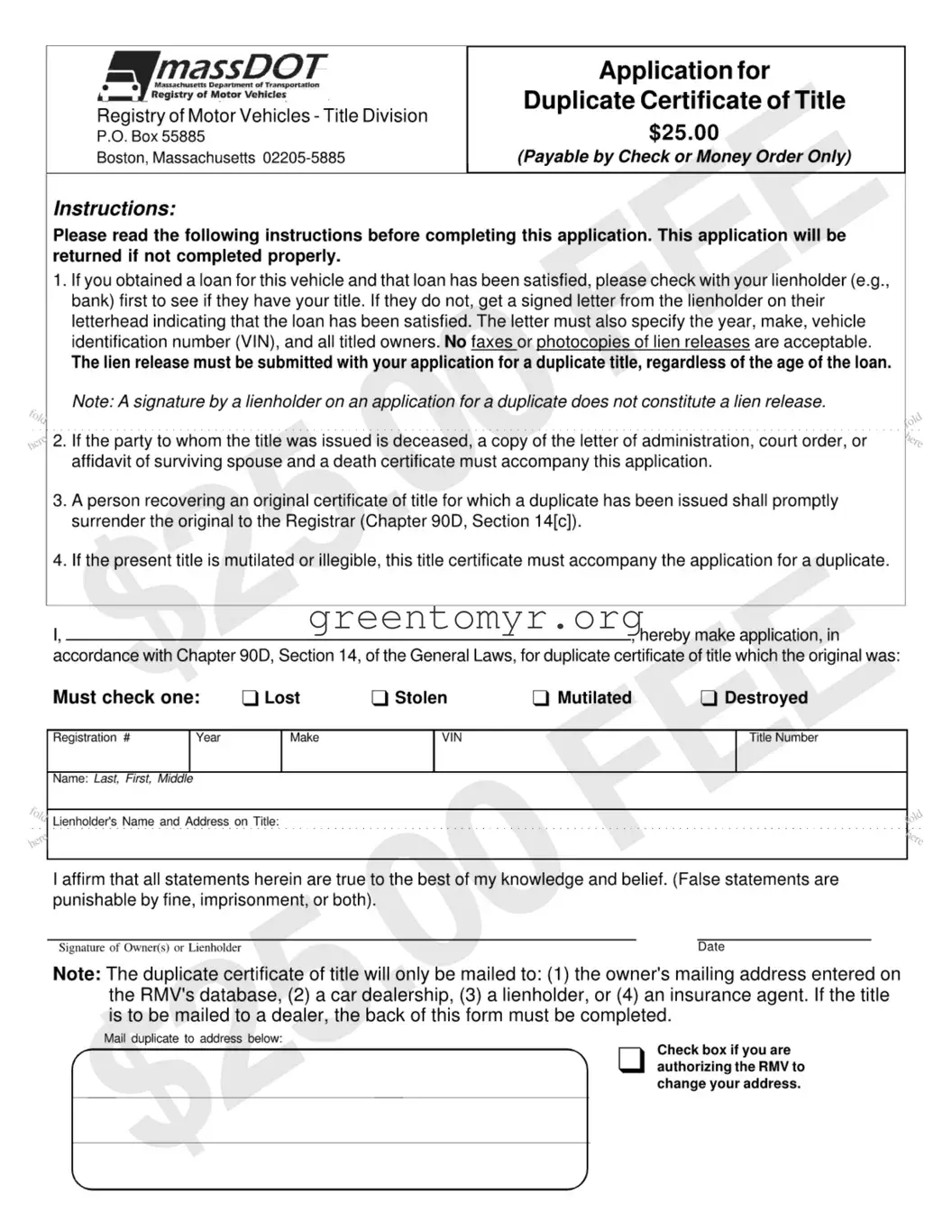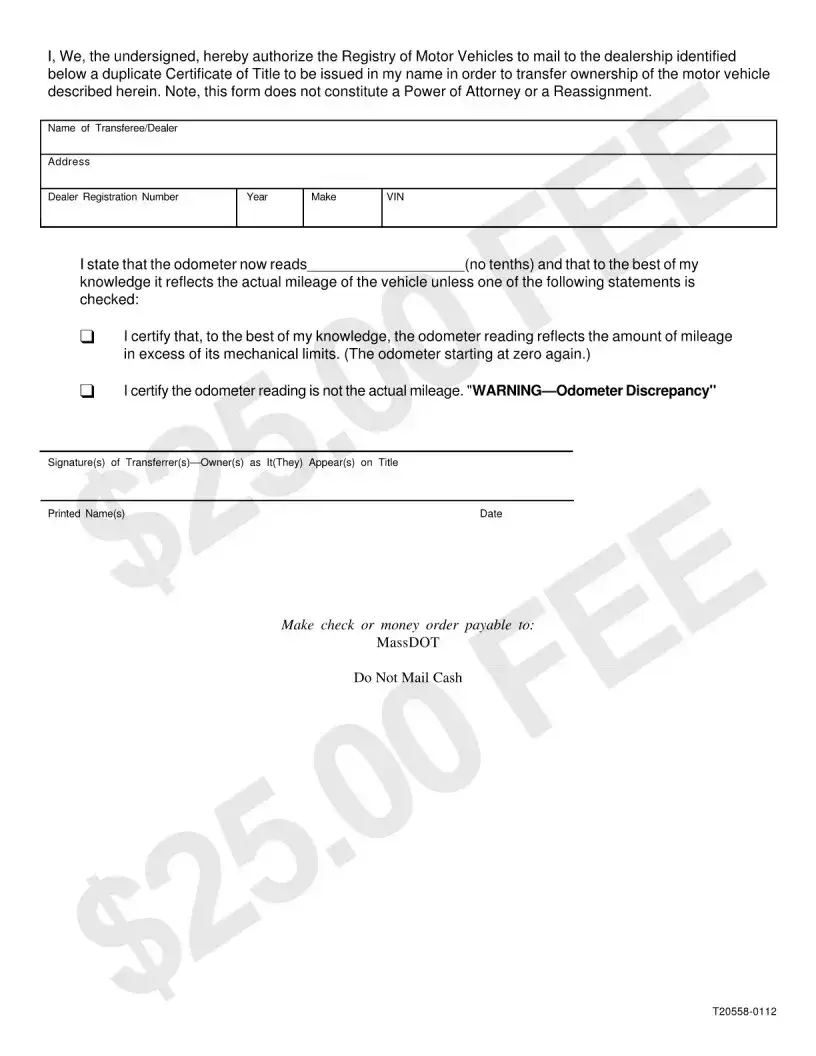Completing the Application for Duplicate Certificate of Title can appear straightforward, but several common mistakes can lead to delays or rejections. Understanding these pitfalls can help make the process smoother.
One frequent error occurs when individuals fail to include the necessary documentation from their lienholder. If a vehicle has been financed and the loan is satisfied, it is crucial to obtain a signed letter from the lienholder. This letter must be on official letterhead and contain specific details like the vehicle’s year, make, VIN, and the names of all titled owners. Omitting this step can result in the application being returned.
Another mistake is presenting incorrect information regarding the vehicle or the title. For instance, stating the wrong registration number, VIN, or title number can lead to significant issues. It is advisable for applicants to double-check these details to ensure accuracy. Any inconsistency might necessitate filing the application again.
Failing to provide proper identification or a death certificate, when applicable, is also problematic. In cases where the original title holder is deceased, it is mandatory to include a letter of administration, court order, or affidavits along with the death certificate. Without this documentation, the application will not be processed.
Neglecting to submit a mutilated or illegible original title when applicable can cause further complications. If the current title cannot be read clearly, it needs to accompany the application for a duplicate title. This requirement is often overlooked, which can halt the process until all necessary documents are received.
Moreover, many people forget to sign the application. The form requires the signature of the owners or lienholder, affirming that all information provided is true. Not including a signature will result in the application being deemed incomplete and returned.
In addition to these errors, applicants may mistakenly select the wrong reason for requesting a duplicate title. Whether the original was lost, stolen, mutilated, or destroyed affects processing and requires the correct box to be checked. An oversight in this regard could lead to additional delays.
Finally, it is not uncommon for individuals to overlook the address where the duplicate certificate should be mailed. The application will only be processed if the address is listed correctly, whether it be the owner's mailing address, a dealership, or a lienholder’s address. Miscommunication regarding mailing addresses can significantly slow down the receipt of the new title.
By being aware of these common mistakes, individuals can improve their chances of successfully obtaining a duplicate certificate of title without unnecessary delays. Careful attention to detail and following all instructions can make the process more efficient.


